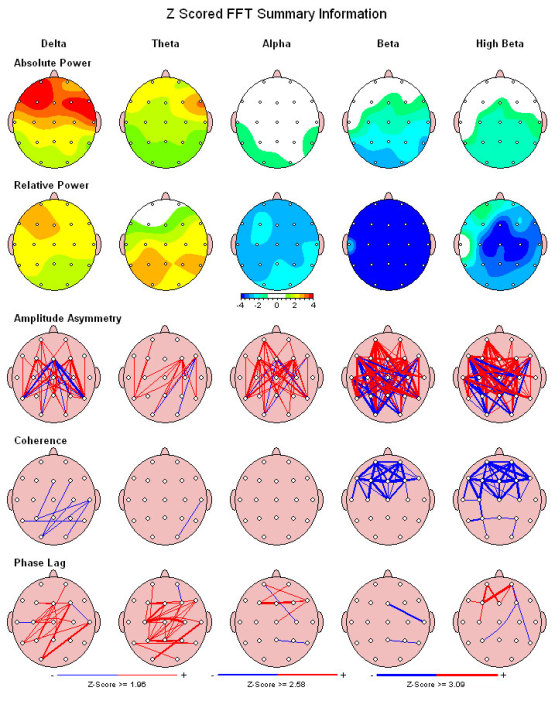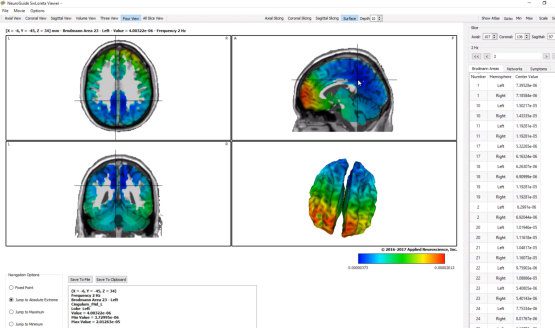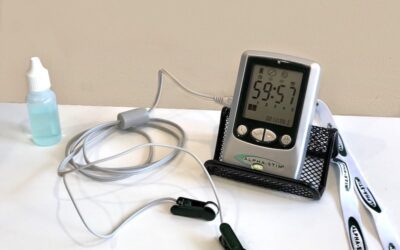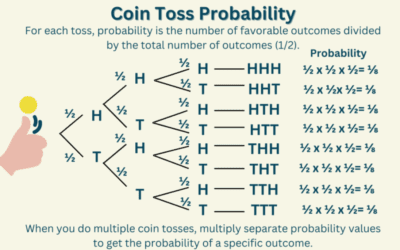
At Taproot Therapy Collective, we are at the forefront of innovative treatments for autism spectrum disorder (ASD). Our approach combines the cutting-edge technologies of qEEG brain mapping and neuromodulation to provide personalized, targeted interventions that address the unique challenges faced by individuals with ASD. By harnessing the power of these advanced techniques, we aim to promote positive changes in brain function, behavior, and overall quality of life.
Understanding Autism Spectrum Disorder
Autism spectrum disorder is a complex neurodevelopmental condition characterized by persistent deficits in social communication and interaction, as well as restricted, repetitive patterns of behavior, interests, or activities1. The wide variability in the presentation and severity of ASD underscores the need for objective measures to understand the underlying brain function and guide targeted interventions1.
While the precise etiology of ASD remains elusive, research suggests that it arises from a combination of genetic and environmental factors, leading to alterations in brain development and function2. These alterations can manifest as atypical brain connectivity, disrupted neural circuit function, and imbalances in excitatory and inhibitory neurotransmission3.
The Role of qEEG Brain Mapping in ASD
Quantitative electroencephalography (qEEG) brain mapping is a non-invasive neurophysiological technique that analyzes the electrical activity of the brain recorded via electrodes placed on the scalp1. By quantifying various characteristics of the electroencephalogram (EEG), such as frequency, amplitude, and coherence of brainwaves, qEEG provides valuable insights into the underlying brain function of individuals with ASD8.
Research has consistently demonstrated that individuals with ASD exhibit distinct patterns of brain activity, including increased slow-wave activity (delta and theta) in frontal regions, reduced alpha power, and abnormal connectivity between brain areas9. These neurophysiological markers can be reliably identified through qEEG brain mapping, offering a powerful tool for both diagnosing ASD and monitoring the efficacy of interventions10.
At the Taproot Therapy Collective, we utilize state-of-the-art qEEG brain mapping technology to identify the specific patterns of dysregulation in each individual with ASD. This personalized approach allows us to develop targeted treatment plans that address the unique neurophysiological profile of each client, optimizing the effectiveness of our interventions.
Neuromodulation Techniques for ASD
Neuromodulation techniques, including neurofeedback, transcranial magnetic stimulation (TMS), and transcranial direct current stimulation (tDCS), have emerged as promising non-invasive approaches to modulate brain activity in individuals with ASD4. By targeting specific brain regions and brainwave patterns identified through qEEG, these techniques aim to normalize dysregulated activity and promote optimal brain function.
Neurofeedback
Neurofeedback is a type of biofeedback that trains individuals to self-regulate their brain activity by providing real-time feedback on their brainwave patterns7. Our qEEG-guided neurofeedback protocols target specific areas of the brain associated with ASD symptoms, such as the frontal and temporal lobes, aiming to reduce excessive slow-wave activity and increase faster, more organized brainwaves8.
Studies have demonstrated the efficacy of neurofeedback in improving various aspects of ASD, including attention, hyperactivity, emotional regulation, social interaction, and communication skills14. By training the brain to function more efficiently, neurofeedback can lead to significant and lasting improvements in behavioral outcomes and overall functioning16.
qEEG Findings and Neuromodulation Techniques for ASD

The following table summarizes the typical qEEG findings in ASD and the corresponding neuromodulation techniques that target these specific patterns of brain activity:
| Feature | qEEG Brain Mapping | Neurofeedback | Transcranial Magnetic Stimulation (TMS) | Transcranial Direct Current Stimulation (tDCS) |
|---|---|---|---|---|
| Typical Findings | Increased delta and theta power (frontal)1; Increased beta power (some cases, anxiety)1; Reduced alpha power1; Lower beta power (focus issues)7; Abnormal connectivity9 | Used to guide NFB protocols based on individual qEEG profiles7 | Used in some protocols (e.g., MeRT) alongside qEEG for personalized targeting26 | Used to assess changes in brain activity (e.g., MMN latency and amplitude) pre- and post-treatment6 |
| Targeted Brainwave Patterns (NFB) | Reduce excessive delta/theta, increase beta for attention8; Increase alpha for relaxation20; Normalize overall brain activity13 | Train towards desired patterns using real-time feedback7 | Not directly applicable | Not directly applicable |
| Targeted Brain Regions (TMS) | Parietal lobe (connectivity)28; Left inferior frontal gyrus (language)28; DLPFC (mood, executive function)24; Individualized targets based on qEEG (MeRT)27 | Right posterior (calming, social awareness), Right frontal (emotional outbursts)14; Based on qEEG7 | Prefrontal cortex, temporoparietal junction, fusiform gyrus5 | Left DLPFC (executive function, social cognition)6; Right rTPJ (social functioning)35 |
| Reported Benefits | Identification of atypical brain activity, potential diagnostic aid9; Monitoring treatment efficacy9; Subtyping of ASD1 | Improved attention, reduced hyperactivity/impulsivity4; Enhanced emotional calming, better sensory processing14; Improved social interaction/communication14; Better sleep, reduced anxiety20 | Amelioration of core symptoms (repetitive behaviors, social behavior, executive functions)5; Improved language28; Reduced irritability/hyperactivity29; Enhanced long-range connectivity28 | Improved behavioral problems6; Enhanced functional connectivity30; Improved social functioning35; Potential for cognitive and social-communication skill improvement6 |
The Taproot Therapy Collective Difference
At the Taproot Therapy Collective, we are committed to providing the highest quality care for individuals with autism spectrum disorder and their families. Our team of skilled clinicians combines expertise in qEEG brain mapping and neuromodulation with a deep understanding of the unique challenges faced by those on the autism spectrum.
Personalized Treatment Plans
We recognize that ASD is a complex condition that affects each individual differently. That’s why we take a personalized approach to treatment, tailoring our interventions to the specific needs and goals of each client. By integrating meta-cognitive strategies and embracing the strengths of neurodiversity, we aim to empower our clients to thrive in their daily lives.
Supporting Neurodiverse Individuals
We understand that navigating the world as a neurodiverse individual can be challenging. Our team is here to provide support and guidance every step of the way. Whether you’re seeking strategies for managing neurodivergent burnout, exploring the process of unmasking, or dealing with co-occurring conditions like Ehlers-Danlos syndrome, dyslexia, depression, or anxiety disorders, we’re here to help.
A Holistic Approach to Wellness
We believe that true wellness encompasses the mind, body, and spirit. In addition to qEEG brain mapping and neuromodulation, we offer a range of complementary therapies and resources to support your overall well-being. From counseling and coaching to educational support and community events, we strive to create a nurturing environment that fosters growth, connection, and empowerment.
Experiencing qEEG Brain Mapping and Neuromodulation

Undergoing qEEG brain mapping and neuromodulation at the Taproot Therapy Collective is a comfortable and non-invasive process. Our state-of-the-art facilities are designed to provide a welcoming and supportive environment, ensuring that you feel at ease throughout your treatment journey.
During the qEEG brain mapping process, a cap with electrodes will be placed on your head to record the electrical activity of your brain. This procedure is painless and typically takes about 60-90 minutes. The data collected will be analyzed by our team of experts to identify any patterns of dysregulation and guide the development of your personalized treatment plan.
Neuromodulation sessions, such as neurofeedback, TMS, or tDCS, are conducted by our trained clinicians in a relaxed setting. You will be seated comfortably while the treatment is administered, and you may be asked to engage in specific tasks or activities during the session. Most people find the experience to be relaxing and report minimal discomfort, if any.
Empowering Individuals with ASD to Reach Their Full Potential
At the Taproot Therapy Collective, we are dedicated to empowering individuals with autism spectrum disorder to reach their full potential. By combining the cutting-edge technologies of qEEG brain mapping, neurofeedback, TMS, and tDCS, we offer a comprehensive and individualized approach to treatment that addresses the unique challenges and strengths of each client.
Our goal is to help you or your loved one navigate the complexities of ASD, develop essential skills, and enhance overall quality of life. Whether you’re seeking support for yourself or your child, our compassionate and knowledgeable team is here to guide you every step of the way.
Take the First Step Towards Transformation
If you’re ready to experience the transformative power of qEEG brain mapping and neuromodulation for autism spectrum disorder, we invite you to take the first step by contacting the Taproot Therapy Collective today. Our team is ready to answer your questions, provide more information about our services, and schedule a consultation to discuss how we can help you or your loved one thrive.
Don’t wait to unlock the potential within. Reach out to us today and embark on a journey towards greater understanding, empowerment, and well-being.
Together, we can create a brighter, more fulfilling future for individuals on the autism spectrum.


























0 Comments